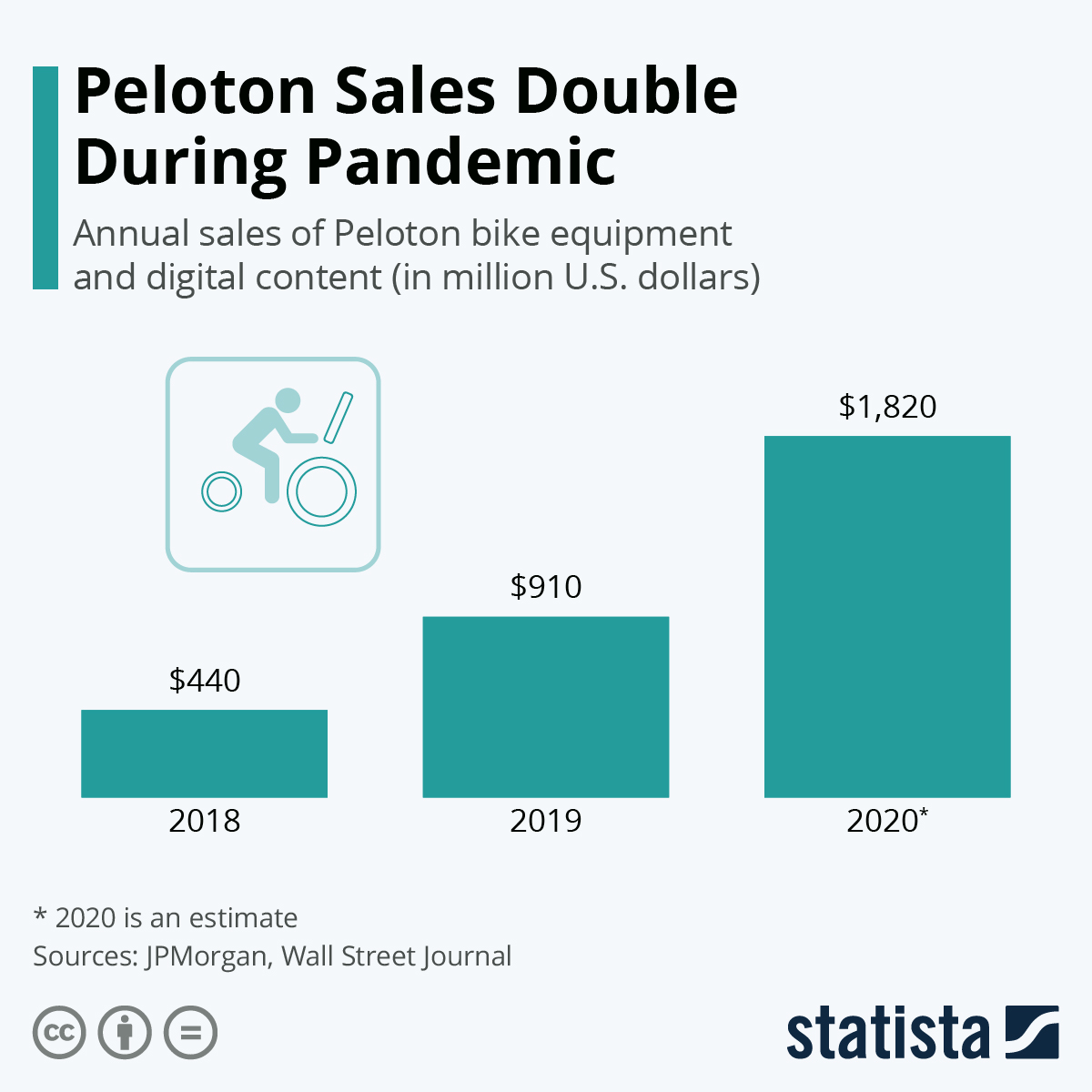
Will Home Fitness Surge Past the Pandemic?
 We seem to be living in boom times for home fitness – at least for the folks selling it. In 2019, people wondered if Peloton would be a flash in the pan. After a 2019 IPO at 29 dollars per share, its stock price dropped by more than 30 percent in early 2020. But that was before the new reality of living through a pandemic set in. Gyms closed for extended period. So in 2020, Peloton sales doubled. Home fitness surged because it was the only option.
We seem to be living in boom times for home fitness – at least for the folks selling it. In 2019, people wondered if Peloton would be a flash in the pan. After a 2019 IPO at 29 dollars per share, its stock price dropped by more than 30 percent in early 2020. But that was before the new reality of living through a pandemic set in. Gyms closed for extended period. So in 2020, Peloton sales doubled. Home fitness surged because it was the only option.
The question now, though, is what comes next? Will the surge in home fitness endure when we find our new normal after the pandemic?
Numbers Versus Narratives
About Physical Activity in the Pandemic
If you buy the speculation, the pandemic is turning us all into couch potatoes. Narratives about kids becoming inactive and gaining weight attract many clicks. However, getting a handle on the objective truth is a little harder. Self-reports of physical activity have real issues. Anecdotes are not a substitute for data.
When researchers look at the impact of the pandemic on physical activity, objective measures tell variable stories. Using data from 740,000 individuals with physical activity trackers all over the world, Jean Louis Pépin et al found a very mixed picture. In countries with total home confinement, physical activity dropped. Those drops ranged from 25 to 54 percent. But even before those total lockdowns ended, people started moving again.
In contrast, regions with less than total home confinement experienced little impact on physical activity. People moved around even though they presumably kept their distance.
Another study, by Geoffrey Tison et al, found a 27 percent drop in physical activity in the first half of the year among users of a wellness app called Argus.
Still other research tells us that there’s a gap between perception and reality in the impact of the pandemic on physical activity. In fact, researchers found that a sample of 1,055 Canadians thought the pandemic had led them to be less active. But in fact, data from a standardized measure of physical activity indicated that most of them (58 percent) had not changed their activity levels. Six percent were moving more.
Home Fitness Booming
The NPD Group tracks consumer behaviors and purchasing patterns. VP Matt Powell says, “As soon as the lockdowns took effect, the home-fitness business took off like wildfire.” The money went for everything from inexpensive yoga mats to big ticket home equipment. Subscriptions to virtual fitness classes and apps are booming, too.
Industry analyst Joanna Zeng O’Brien says this will not disappear entirely:
“There is the convenience of working out from home, but people also want to go to physical locations. People miss that. For companies that want to stay around and not become obsolete, they have to do both.”
The truth is that this pandemic will change us in enduring ways. The patterns of our lives will be different, even after it fades.
Click here for further perspective from the Washington Post. For the Pépin study, click here, and here for the Tison study.
Gymnast, painting by Eugène Jansson / WikiArt
Subscribe by email to follow the accumulating evidence and observations that shape our view of health, obesity, and policy.
January 9, 2021
